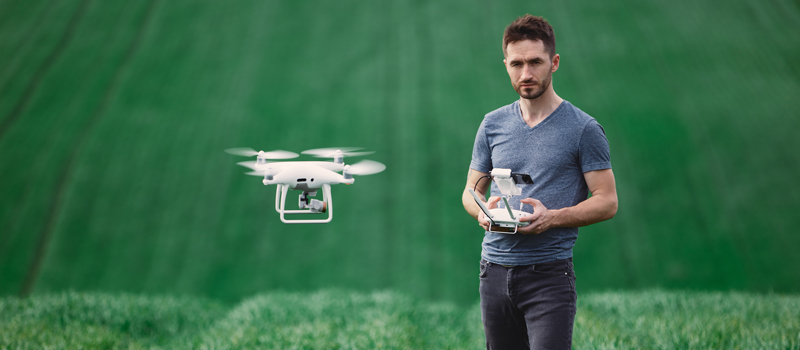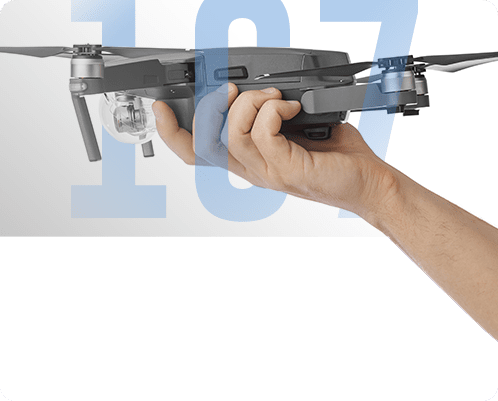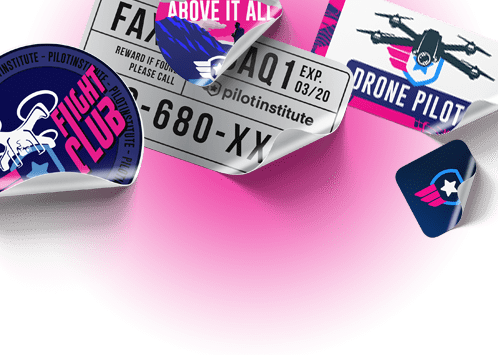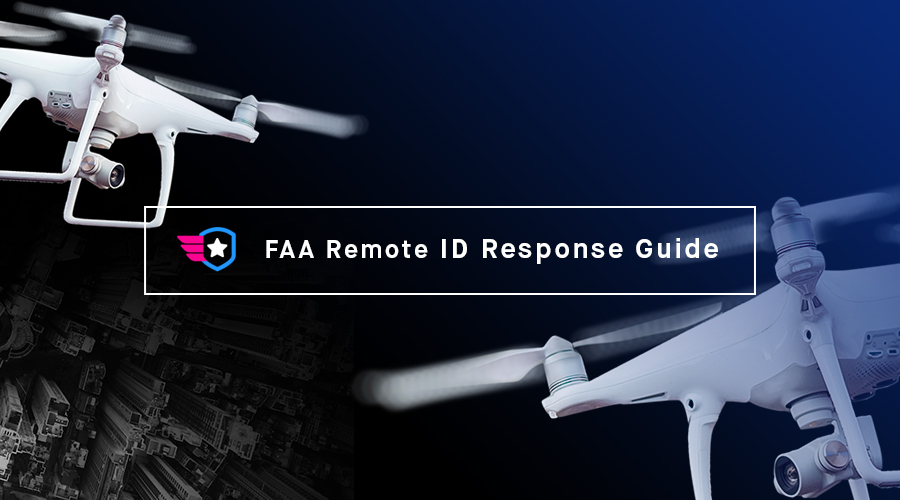-
The Basics of Part 107
- What is Part 107?
- Does Part 107 apply to all drone pilots?
- What rules do recreational drone pilots need to follow?
- Does Part 107 require drone registration?
- Does Part 107 allow the flight of a drone that weighs more than 55 pounds?
- Do the Part 107 rules apply to indoor drone flight?
-
The Part 107 remote pilot certificate
- Who needs to get a Part 107 remote pilot certificate?
- Is there an equivalent drone license for recreational drone pilots?
- What does it take to earn the drone license?
- Do I need to show a medical certificate as proof of physical and mental fitness?
- How long does the Part 107 certification process take?
- How much will I need to spend to get the Part 107 remote pilot certificate?
- Do airmen with a Part 61 pilot certificate need to go through Part 107 certification?
- For how long does the drone license remain valid?
- What is the penalty for flying a drone for profit without the appropriate drone license?
-
The Part 107 knowledge test
- What is the Part 107 knowledge test?
- What is the passing score for the knowledge test?
- What is the FAA Tracking Number (FTN)?
- How do I sign up for the knowledge test?
- Where can I take the test?
- How much is the testing fee and what is this fee for?
- What happens if I fail?
- What topics are covered in the knowledge test?
- How can I prepare for the knowledge test?
- What should I bring (and NOT bring) on the day of the knowledge test?
- How will I know if I passed?
- What happens after I pass the knowledge test?
- What does the TSA look for in the background check?
- What happens after the TSA background check?
-
What to do after earning your drone license
- What is controlled airspace, and can I fly in controlled airspace under Part 107 rules?
- What is LAANC and how does it work?
- What is a Part 107 waiver?
- How do I apply for a Part 107 waiver?
- What are the chances of a waiver application getting approved?
- Can I fly my drone at night?
- Can I fly my drone over people?
- Can I fly my drone above 400 feet in uncontrolled airspace?
- How far away am I allowed to fly my drone according to Part 107 rules?
- What Is drone insurance and is it required by Part 107?
-
Final thoughts
There is no other piece of legislation made in the last five years that is more relevant to drone pilots than the 14 CFR Part 107 rules. These laws were crafted by the FAA in response to a surge of drones taking to the sky because of improvements in drone technology making them more accessible and appealing than ever.
In this article, we provide detailed answers to all the questions about Part 107 from the fundamentals all the way to the finer points of the law. If you’re aspiring to become a professional drone pilot or are simply curious about the laws on drone flight, then this guide will surely prove to be useful for you.
The Basics of Part 107
What is Part 107?
Part 107 of Chapter 14 of the Code of Federal Regulations is a 624-page document with an official title of “Small UAS Rule”. Developed by the Department of Transportation (DOT) and the Federal Aviation Authority (FAA) and implemented in June 2016, Part 107 was created as a response to a growing number of drone pilots and the maturing of a market for commercial drone services.
The Part 107 Small UAS Rule was the first piece of legislation created specifically for commercial drone pilots. Prior to Part 107, those who wanted to fly their drones commercially had to apply for a Section 333 exemption. This was a much longer process that had more stringent requirements. Under Part 107, the certification process became much more streamlined, resulting in hundreds of thousands of licensed drone pilots as of 2020.
The ultimate goal of the Part 107 rules is national airspace safety. The growing number of drones meant that there were more chances of drones and manned aircraft getting into close encounters with each other. Even drone crashes were a concern because they could lead to personal injuries or damage to private property and critical infrastructure.
Aside from imposing restrictions on where and when drones can be flown, Part 107 also created a standard of proficiency that a drone pilot needs to attain before they can fly drones commercially. This was implemented through the Part 107 remote pilot certificate, a certification that the FAA grants for legal commercial drone operations – a drone license, so to speak.
Does Part 107 apply to all drone pilots?
No, the Part 107 rules only apply to drone pilots who wish to fly their drones commercially, for profit, or to aid any business. Drone pilots who only want to fly for fun are not bound by the Part 107 rules.
What rules do recreational drone pilots need to follow?
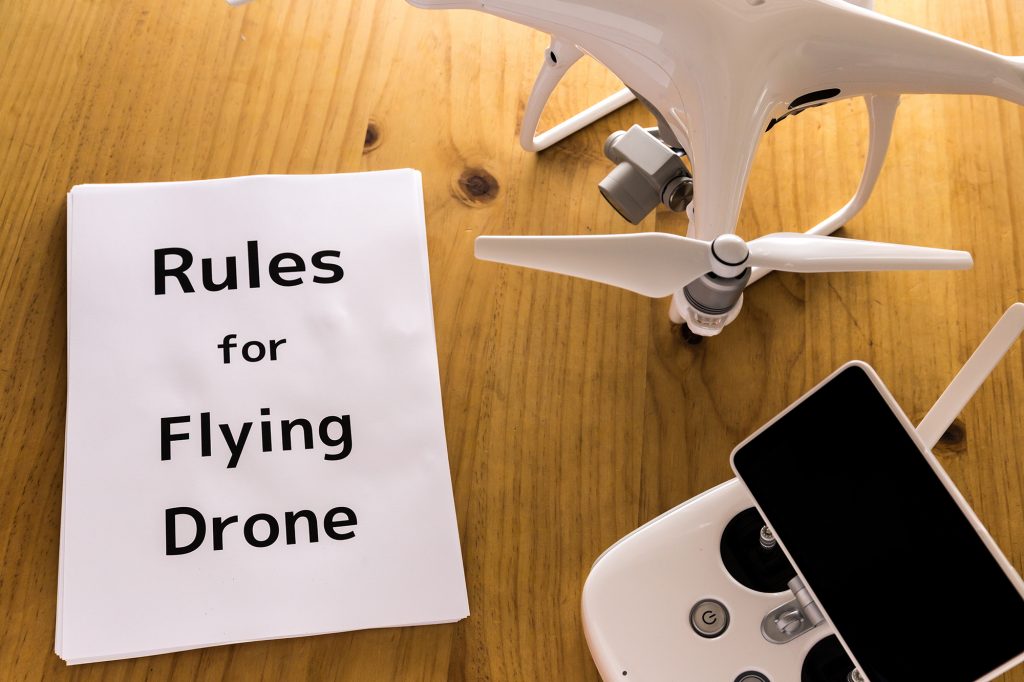
Following a long period of confusion and conflict, the FAA Reauthorization Act of 2018 was finally implemented and became the first legitimate law regulating recreational drone flight. Many of these rules under this law are the same “guidelines” that have been published by community-based organizations over the years, but this is the first real law that requires compliance.
The rules for recreational drone flight are pretty basic, many of them overlapping with the Part 107 flight restrictions. The rules include flying only within visual line-of-sight, away from crowds of people and moving vehicle, and only within 400 feet altitude. Recreational drone pilots are also required to give way to manned aircraft at all times and, by default, are prohibited from flying in controlled airspace.
Does Part 107 require drone registration?
If you intend to fly your drone commercially, then yes, it needs to be registered. For commercial use, all drones regardless of weight require registration. In contrast, drones to be used for recreational flight will only need to be registered if they weigh more than 0.55 pounds.
No worries, because drone registration can be done very quickly. All you need to do is to sign up for an account on the FAA DroneZone website. You will be prompted to provide your personal details as well as the make and model of your drone. Registration requires a $5 fee. After payment, you should receive a unique serial number by e-mail.
If you are planning to fly multiple drones commercially, then you will have to register them individually and pay the registration fee for each. Recreational drone pilots need only register once even if they own multiple drones.
Upon receiving the serial number, you will have to indicate it visibly somewhere in your drone. The requirement of the FAA is that the serial number must be easily visible upon visual inspection of the drone. The easiest way to do this would be to write it somewhere in your drone’s body using a permanent marker. You can also place the serial number on a sticker.
Does Part 107 allow the flight of a drone that weighs more than 55 pounds?
No. Flight of drones that weigh more than 55 pounds will require a Section 333 exemption. This is only granted to pilots who already have an Airman’s Certificate with a sport or recreational level certification. It also requires a medical certificate issued by the FAA as proof that the person is at the proper physical and mental state to fly a drone. Securing a Section 333 exemption takes an average of six months.
Do the Part 107 rules apply to indoor drone flight?
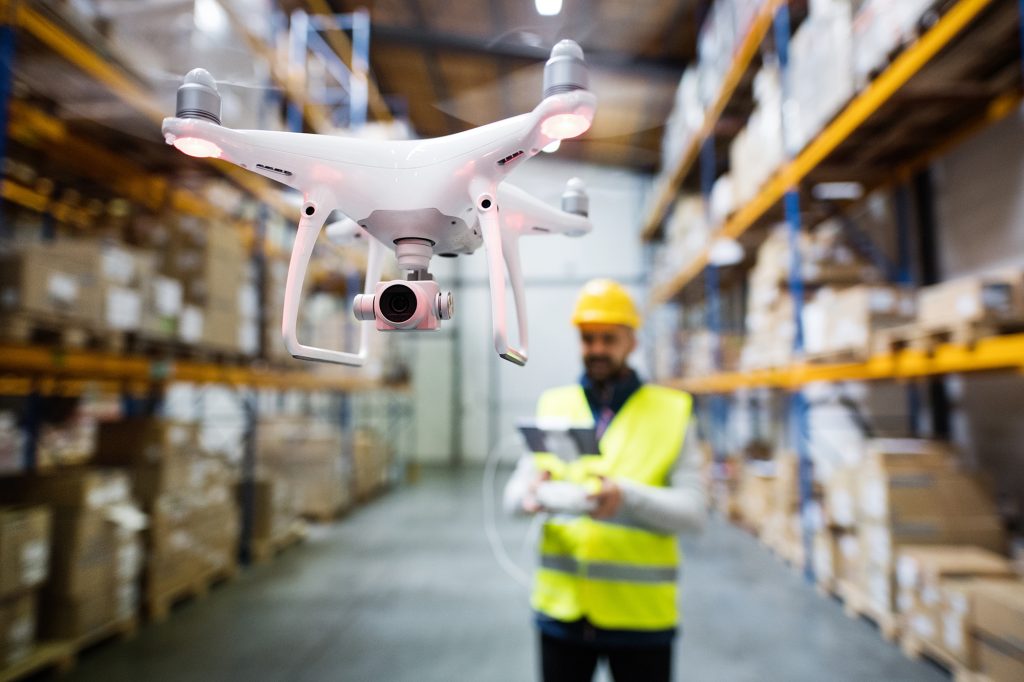
All of national airspace is under the jurisdiction of the FAA, even the space a foot above the ground in your own backyard. As such, the Part 107 rules apply to ALL of national airspace.
The loophole is that any space within a roofed structure is no longer a part of national airspace. This means that all indoor spaces fall outside the jurisdiction of the FAA. Consequently, the Part 107 rules cannot be enforced when flying a drone indoors.
As a word of warning, it’s worth mentioning that indoor drone flight can be very difficult because of the loss of GPS-aided stabilization and the naturally obstacle-dense characteristic of indoor spaces. Indoor drone flight should only be attempted by highly experienced drone pilots.
The Part 107 remote pilot certificate
Who needs to get a Part 107 remote pilot certificate?
Drone pilots who want to earn while flying a drone need to get a Part 107 remote pilot certificate before they can operate for profit legally. Typical examples include drone photographers, filmmakers, inspectors, and mappers.
Maintaining a gallery of aerial photos and selling them online is also considered commercial use, as is the use of any aerial photos to advertise a business or in a publication. There are lots of gray areas in defining what is or isn’t commercial use, but any application of drone technology that advances a business can be safely assumed as requiring a Part 107 drone license.
Is there an equivalent drone license for recreational drone pilots?
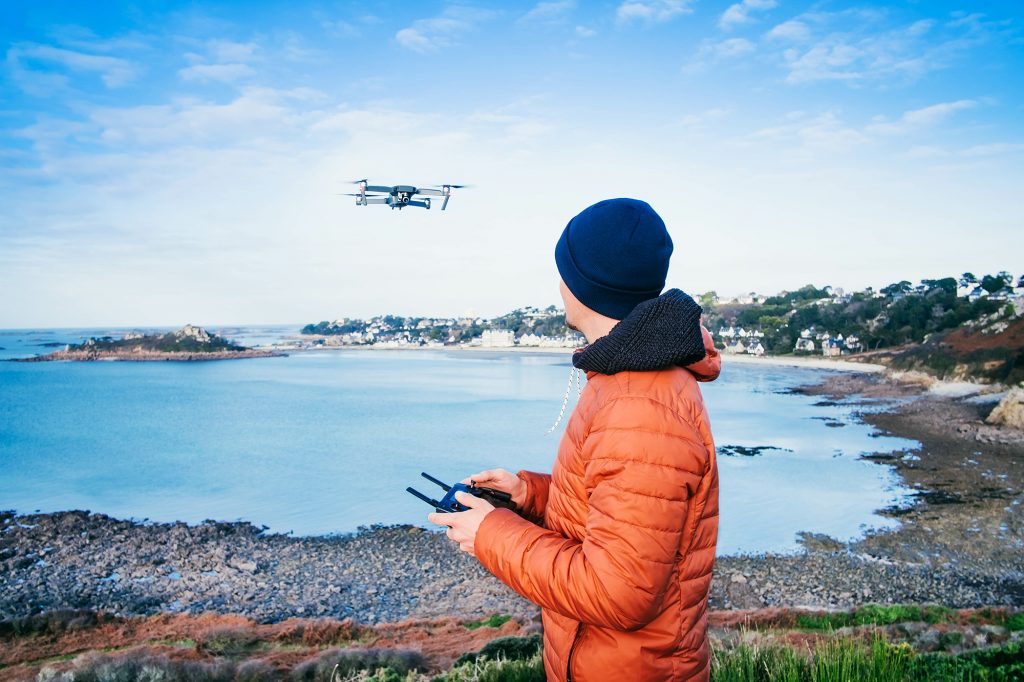
Right now, there is no requirement for recreational drone pilots to go through any certification process before they fly their drones as long as they do it only for fun. However, the FAA has already spoken about plans to implement a knowledge test requirement for recreational drone pilots.
Right now, the FAA is already working with several drone-related organizations to craft the knowledge test. There have not been any indications as to what topics the test will cover, or how it will be administered. We’ll have to watch out for updates in the next couple of months.
What does it take to earn the drone license?
The primary qualifications for those who wish to apply for a Part 107 drone license are as follows:
- Be at least 16 years of age
- Be able to read, write, speak, and understand English
- Be physically and mentally fit to fly a drone
If you satisfy all three qualifications, then you can move on to the next step of certification: taking and passing the Part 107 knowledge test. The knowledge test is, by far, the most resource-intensive and time-consuming part of the Part 107 certification process. Passing the test requires focus, a good selection of study materials, and ample time to prepare.
Once you have passed the knowledge test, the last step is to go through a TSA background check. You are a non-participating party in this part of the process, so there’s not much you need to worry about. Once the TSA has vouched for you, then you’re all good! You’ll be receiving your temporary certificate by email while the permanent certificate will be sent to you by regular mail.
Do I need to show a medical certificate as proof of physical and mental fitness?
The FAA does not require a medical certificate when you apply for the Part 107 remote pilot certificate. Instead, they rely on applicants to do a self-assessment and determine if they are fit to fly a drone.
How will you know if you are physically and mentally fit? Any conditions that cause poor vision, loss of dexterity, an inability to communicate, and difficulty in making decisions in high-stress conditions should be considered cause for concern. Basically, if you’re not fit to drive a car or operate heavy machinery, then there’s a good chance that you’re not fit to fly a drone, either.
How long does the Part 107 certification process take?
If you are trying to get a Part 107 drone license so you can start a business or career based on drone flight, then you’ll have to anticipate how long the certification process is going to take. There is no definitive answer to this question as a lot of factors come into play: how long you need to prepare for the knowledge test, how soon a schedule will open up on your preferred testing center, how much backlog the FAA has on pending Part 107 applications, and how long the TSA will take to finish their background check.
Based on the experience of hundreds of drone pilots who have gone through the certification process, it will take anywhere between 26 to 48 days from the day you sign up for the test until when you receive your remote pilot certificate.
Take note that the pace at which you study for the test is up to you, although we don’t recommend rushing it. Taking the time to properly prepare is a lot more prudent, as failing the knowledge test on your first try means you’ll have to wait 14 more days before you can take the test again.
How much will I need to spend to get the Part 107 remote pilot certificate?
Again, this is a question that has no straightforward answer. Strictly speaking, the only fees you need to pay are the $160 testing fee and the $5 registration fee for each one of your drones. These are the only fees that you will NEED to pay to get the drone license.
However, the reality may be an entirely different matter. To improve your chances of you may want to sign up for a paid training course. Although there are lots of free learning resources online, a paid training course has the advantage of being better designed with a more coherent organization of topics and higher quality learning materials.
Some training courses even sweeten the deal by offering lifetime access to their content and a money-back guarantee should you fail the knowledge test on your first try.
Whether you decide to pay for Part 107 training is your call, although we highly recommend it for better chances of passing the knowledge test. The price for paid training courses can vary across a huge range. Some go for a little less than $150, while others can cost closer to $500. In any case, expect to pay a total of $300 to $800 total if you’re going for a paid training course to prepare for the Part 107 knowledge test.
If you plan to jumpstart a business that offers drone-based services by taking the Part 107 knowledge test, then it’s possible to declare the amount you’ve spent on training as a business expense. The tax deductibles should offset a huge chunk of the training costs.
Do airmen with a Part 61 pilot certificate need to go through Part 107 certification?
Pilots who have already been granted 14 CFR Part 61 certification and have completed a flight review in the last 24 months are eligible to go through a shorter process to earn the Part 107 certification.
If you qualify, then all you need to do is to complete the ALC-451 Part 107 Small Unmanned Aircraft System training course hosted on the FAA Safety Team website. The course consists of a couple of short videos that touch on the basics of drone flight and a short quiz at the end. You should be able to finish the course in about two hours.
After completing the course, you will have to sign up for an account in the Integrated Airman Certification and Rating (IACRA) website to continue the application process. Fill up the 8710-13 electronic form, making sure to indicate that you are applying for the Part 107 remote pilot certificate.
Print out the filled-out form, a copy of your current flight review, and the certificate of completion of the online course. Make sure to bring a valid photo ID with you as well. Make a trip to the nearest FAA-certified testing or flight instruction center to have your documents validated. Any of the following people can do the validation:
- FAA Flight Standards District Office
- FAA-designated pilot examiner (DPE)
- FAA-certified flight instructor (CFI)
- Airman certificate representative (ACR)
If your documents an order, you should be issued a temporary certificate right away. Your permanent certificate will be sent to your address by regular mail.
For how long does the drone license remain valid?
Technically, the Part 107 remote pilot certificate itself has no expiration. However, the privileges of commercial drone flight that you earned when you passed the Part 107 knowledge test are only valid for 24 months. After the validity period, you will be required to take and pass a recurrent knowledge test to continue to operate your drone for profit legally.
In the case of Part 61 certified pilots, the same validity period also applies. However, you only need to take another online course to continue to operate your drone commercially. This course – the Part 107 Small Unmanned Aircraft System Recurrent – will only be a valid exception if you have completed a flight review in the last 24 months. Simply keep a copy of the certificate of completion of the online course as proof of the validity of your privileges.
What is the penalty for flying a drone for profit without the appropriate drone license?
According to the FAA, the penalty for flying commercially without the Part 107 drone license will amount to a fine of $32,666 for each incident. This fine can be charged for each incident where you are found to be conducting commercial drone operations illegally. Repeated violations can call for criminal sanctions, including a fine of up to $250,000 and jail time of up to three years.
The Part 107 knowledge test
What is the Part 107 knowledge test?
The Part 107 knowledge test is a 60-item multiple-choice test designed to assess the level of proficiency of drone pilots with topics related to aviation and drone flight. It was rolled out as part of the implementation of the Part 107 rules and is the most important basis for the FAA to determine if an aspiring drone pilot has sufficient knowledge to be granted the Part 107 remote pilot certificate.
Being such an important part of the Part 107 rules, the knowledge test was deliberately designed to not be easy. Passing it requires knowledge in reading maps and sectional charts, interpreting TAF and METAR weather reports, and understanding standard radio communications language among other skill areas. You will also need to be highly familiar with all the flight rules and restrictions as outlined in the Part 107 document.
The knowledge test needs to be completed within 2 hours. The questions that show up in the knowledge test are randomly picked from a much larger pool of questions. This means that no two sets will be exactly the same.
What is the passing score for the knowledge test?
To pass the test, you must answer at least 70% of the questions correctly, or 42 out of 60.
What is the FAA Tracking Number (FTN)?
If you’re serious about taking the knowledge test, then the first thing you have to do is to get an FAA Tracking Number (FTN). The FTN is a unique identification number that will become permanently associated with you throughout your whole career in aviation. This is a fairly recent modification that the FAA has made to all airmen certification processes for streamlining and reduce the errors due to misspelled names.
You will need to have an FTN before you can sign up for the knowledge test. To get an FTN, simply create an account in the Integrated Airman Certification and Rating Application (IACRA) website. After the routine filling out of forms, the website should assign you your unique FTN. Take note of the number and write it down somewhere.
How do I sign up for the knowledge test?
The knowledge test is administered by Computer Assisted Training Service Inc (CATS) on behalf of the FAA. CATS also handles scheduling of the test, so you’ll need to get in touch with them. Before you can sign up for a schedule, though, you’ll have to pick a testing center first.
Where can I take the test?
CATS has a network of more than 700 FAA-certified testing centers in the US. With several testing centers at each state, you should be able to pick one that’s just a few minutes of driving away from you. The easiest way to find a conveniently located testing center is to use the map function or search facility on the CATS website.
Once you have picked a testing center from the list on the website, click on its link to check out the regular schedules for the Part 107 knowledge test. Pick a schedule that works for you and get in touch directly with the testing center to set an appointment. You may have to provide your personal details and your FTN, and to pay the $160 testing fee.
How much is the testing fee and what is this fee for?
As of March 2020, CATS charges $160 as testing fee for all their airmen certification tests. This is to compensate CATS for the maintenance of the testing centers and the test administration. None of the testing fees goes to the FAA.
What happens if I fail?
Don’t feel too bad if you fail the knowledge test on your first try – it happens. Now that you know what’s coming, you will be better equipped for the next time that you take the test.
Unfortunately, the testing fee is non-refundable. If you plan on taking another stab at the knowledge test, then you’ll have to pay the $160 testing fee anew. This might not be as big of a problem if you signed up for a paid training course that offers a money-back guarantee.
The good news is that the FAA allows anyone to take the Part 107 knowledge test multiple times until they pass. The only condition is that 14 days must pass before you will be allowed to retake the test.
What topics are covered in the knowledge test?
In their website, the FAA has provided a list of topics that will be covered in the Part 107 knowledge test along with a scheme of roughly how much each topic will be represented:
The distribution breakdown can be used as a guide for how much study time you can wisely allocate to each topic.
|
TOPIC |
Distribution |
| Aircraft operations |
35 to 45% |
| Airspace and requirements |
15 to 25% |
| Regulations |
15 to 25% |
| Weather |
11 to 16% |
| Loading and performance |
7 to 11% |
How can I prepare for the knowledge test?
The hundred-dollar question: what can you do to improve your chances of passing the knowledge test? There are three elements to proper preparation, namely time, focus, and proper study materials. Let’s tackle these one by one.
Time is something you have full control of because you are the one setting your own schedule for the knowledge test. Most drone pilots recommend giving yourself two to three weeks to study for the test. Make sure to pick a window where you don’t have any major events planned. If you have work or school, then set aside a few hours each night to go through your review materials.
Let’s jump ahead to the third element – proper study materials. We’ve already talked about how paid training courses generally provide better materials organized in a more practical and sensible fashion. Aside from text modules and video lectures, most of these courses also provide a smattering of sample questions and exams. Answering these sample exams is a good way to build up your confidence or identify gaps in your knowledge.
Other courses offer a few other learning materials such as flashcards. Illustrated cheat sheets, or opportunities to ask questions to their in-house experts. Different people learn differently, so it’s better if you have more options for how you want to study.
The last element is focus and is something that only you can discover for yourself. If you have a job or go to school, then you have no choice but to divide your efforts between your daily routine and the added pressure of having to study for the knowledge test. If you can get study materials that you can access using just your phone, then that would be a nice option for getting in some study time between breaks or during your regular commute.
As a final piece of advice, we’d like to emphasize how everyone has different learning techniques that work best for them. What matters is that you find out the method that is best for you and that you stick with it. Although two to three weeks is generally long enough for other people who have taken the Part 107 knowledge test, you’re also free to take as long as you need.
What should I bring (and NOT bring) on the day of the knowledge test?
The most important thing to do on the day of your scheduled test is that you arrive on time (or even ahead of time, if you can help it). The only thing you need to bring is a valid government-issued photo ID so that your identity can be verified. You are also allowed to bring a basic calculator and a magnifying glass to help look at the symbols and figures in sectional charts. What you are NOT allowed to bring is your phone, so it’s best to just leave it behind in your car.
The testing center will provide you a dedicated computer workstation where you will take the test. You will also be provided with several sheets of paper and a pencil to do long-hand calculations along with a copy of the Airman Knowledge Testing Supplement Book, which you’ll use to look up the sectional charts referred to in the test questions.
You will be monitored by security cameras while you take the knowledge test.
How will I know if I passed?
Checking the test is done automatically, so your results should theoretically be available instantly. Some testing centers may even let you know – unofficially – if you’ve passed or failed. The official results will only be available once they have been uploaded to the FAA website, which usually takes two or three days.
At this point, you should receive your Airman Knowledge Testing Report (AKTR) which should quote your FTN and show the score that you got from the test.
What happens after I pass the knowledge test?
To proceed to apply for the Part 107 remote pilot certificate, had back to the IACRA website and file the application. With the new FTN system, your successful test results should already be reflected on your IACRA account.
After you’ve filed your application, there is one last step you need to go through before you can be granted the drone license. The last step involves a background check by the TSA. As you have zero participation in this step, there’s not much you can do at this point but to wait.
How long the background check takes will probably depend on how much backlog they are handling with regards to FAA airmen certification applicants. According to several accounts, the background check could be done in as little as a week or could take as long as two months.
What does the TSA look for in the background check?
It’s hardly surprising when it comes to the TSA, but they aren’t exactly transparent in their standards for the background check. According to the TSA, they use the same protocol for Part 107 certification as they do for all other airmen certification applications. There have been accounts of drone pilots with past felonies who were still granted the drone license, so you should be good as long as you don’t have any aviation-related offenses.
What happens after the TSA background check?
When the TSA has officially vouched for you, you should immediately receive your Part 107 temporary certificate by e-mail. This temporary certificate is only valid for 120 days, although you should receive your permanent certificate by regular mail within this period. Keep your drone license with you whenever you fly your drone commercially, as you may be asked to present it by local law enforcement or by representatives from the FAA or TSA.
What to do after earning your drone license
What is controlled airspace, and can I fly in controlled airspace under Part 107 rules?
Airspace categorization is one of the most important topics that professional drone pilots need to learn about. The most pertinent concern should be controlled airspace, typically in areas surrounding airports where an unusually high density of air traffic is expected. There are different types of controlled airspace, each with different areas of extent based on how much air traffic the airport routinely receives.
By default, all drone flight is prohibited in controlled airspace. However, Part 107-licensed drone pilots can request for authorization to operate in controlled airspace through the LAANC system. If you are unsure if your planned drone flight location falls within controlled airspace, then it’s best to use a drone flight app like Airmap or Kittyhawk.
What is LAANC and how does it work?
The Low Altitude Authorization and Notification Capability (LAANC) system was developed by the FAA along with several stakeholders as a means for professional drone pilots to quickly and easily request for airspace authorization. Requests made through LAANC are received by the FAA, who then get in touch with the appropriate air traffic control (ATC) facility.
The shift to a more centralized system has made the process of airspace authorization much faster and more streamlined. With LAANC, drone pilots can receive a response to their request in just a few minutes. This was a massive improvement to the old methods that drone pilots had to resort to.
Since its release, LAANC has been adopted as a feature by a growing list of drone flight apps. Through these apps, you can make your request by providing the date, time, and location of your planned operations, as well as your personal details and details of the drone you will be using. Everything can be done through the apps, including documentation of the LAANC approvals that you have received.
LAANC was initially created to be used by Part 107-licensed drone pilots but has since been expanded to allow use by recreational drone pilots.
What is a Part 107 waiver?
Recognizing that professional drone pilots may need to operate at conditions that would normally run in defiance of the Part 107 rules, the FAA has included a provision in the rules that allow drone pilots to request for waivers to these rules. This system allows drone pilots to “color outside the lines” while still doing so in a safe and legal manner.
The FAA currently grants waivers for the following flight restrictions:
- Operations at night
- Operations over a populated area
- Operations beyond visual-line-of-sight
- Operations over restricted airspace
- Operations of multiple drones by a single drone pilot
- Operations from a moving vehicle or aircraft
Drone operations over controlled areas were previously authorized via the waiver system, but this has been made redundant by LAANC.
How do I apply for a Part 107 waiver?
Waiver requests are filed through the FAA DroneZone website. The waiver application page will take you through a series of forms where you will need to provide personal details and the details of your planned operations. You will also need to provide the technical details of your drone including its mode, weight (including any payload), dimensions, maximum speed, flight time, range, and the presence of any anti-collision technology.
More importantly, you will have to write down the risks that you are anticipating for your planned operations and the measures you will be taking to mitigate said risks. In many cases, this is the make-or-break portion of a waiver application. Try to be as detailed as possible with the descriptions and the mitigating measures you are proposing.
The FAA prescribes a 90-day lead time for waiver requests. If you need a waiver to do a job, then you’ll have to plan way ahead so you don’t run into any legal problems. The waiver processing team may also get in touch with you during this period if they need additional details, so make sure to keep those lines of communication open.
What are the chances of a waiver application getting approved?
As of March 2020, the FAA has approved almost 4000 Part 107 waivers. This number does not include waivers granted for flight in controlled airspace from before LAANC was implemented. About 95% of the granted waivers were for drone flight at night. If you are thinking of doing a job at night and are planning to file a waiver, then you have a very good chance of getting that request approved.
The remaining 5% of the waivers granted are split across the other types of Part 107 waivers, although most of these are for drone flight over populated areas.
Looking at the dates in which the waivers were granted, it can be observed that most of them were granted between 2018 to 2020. Approval seems to be getting a lot easier and faster – from January 2020 to March 2020, more than 200 waivers had already been granted.
This trend is indicative of the FAA becoming more open to approving these waiver requests and drone pilots similarly becoming more skilled in mitigating the associated risks. Technology such as obstacle detection sensors, parachutes, anti-collision lights, and GPS trackers have also helped expand the possibilities of what drone pilots can do safely.
As we shall see later, this paradigm shift has prompted the FAA to propose a few changes to the FAA rules towards a version that is more relaxed.
Can I fly my drone at night?
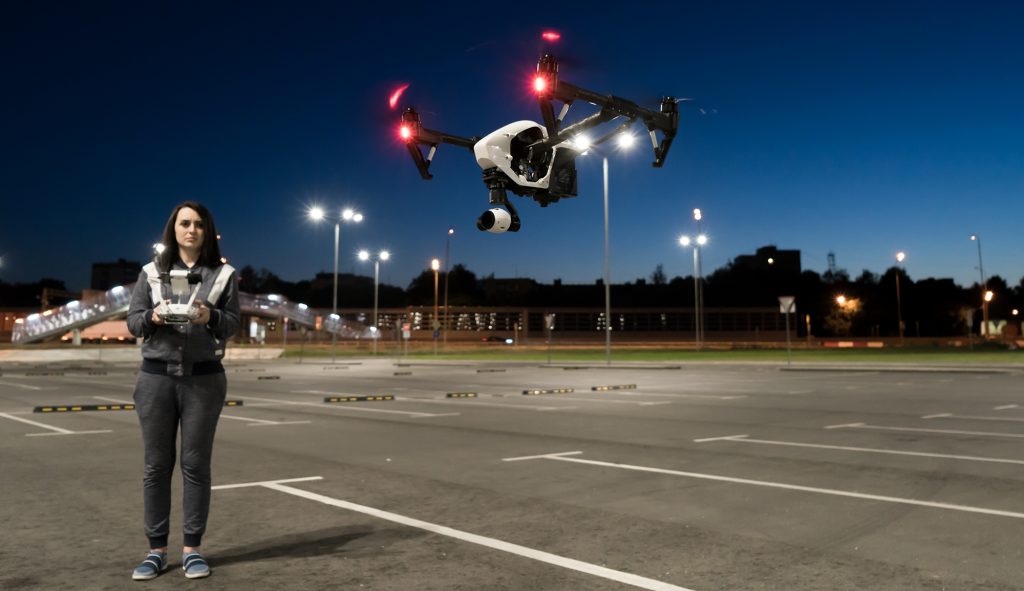
According to Section 107.29 on Daylight Operations, drone operations are allowed “during daylight or in twilight (30 minutes before official sunrise and 30 minutes after official sunset, local time) with appropriate anti-collision lighting”.
From the wording of the rule, we can presume that the Part 107 rules only permit drone flight during daytime or in the 30-minute window of twilight, but only if the drone has anti-collision lights.
As far as commercial drone operations go, this rule has proven to be one of the most restrictive. Providing drone photography services for events at night is out of the question, as is continuing to do a large survey after the sun has set. While it’s possible to request a waiver for night flight (and the FAA has approved thousands of them), the 90-day lead time for waiver processing might still be too long for such a fast-paced industry.
However, a positive development seems to be on the way. In January 2019, the FAA released a notice for proposed rulemaking (NPRM) to change some of the provisions of Part 107. One of these proposals is to lift the restriction on flying drones at night with the requirement to put more focus on “night physiology and night illusions” in the certification process. With this change, a new provision will also have to be added to restrictions that can be waivered to allow drone flight at night WITHOUT anti-collision lights.
So far, there has been no update yet on the status of the proposal and when, or if, it becomes a law.
Can I fly my drone over people?

According to Section 107.39, “no person may operate a small unmanned aircraft over a human being unless that human being is:
- Directly participating in the operation of the small unmanned aircraft, or
- Located under a covered structure or inside a stationary vehicle”
As the rule says, drone flight over a person that is not participating in the operations is prohibited. This includes the audience in a concert, the guests at a wedding party, and even your neighbors. Take note that the rule forbids flight over people, even if they have consented to the activity.
The second part of the rule states implicitly that drone flight over a moving vehicle is also forbidden. It’s easy to see why this is a rule – an encounter between a drone and a moving vehicle can easily lead to vehicular accidents. The rule even goes one step further by qualifying a “stationary” vehicle as one in which the engine is not running.
The restriction for drone flight over people is another rule where the FAA is relaxing their stance on. This is demonstrated by the high number of waivers that have been granted for flight over people over the last two years. The FAA has also included changes to this rule in the January 2019 NPRM.
Under the proposed rules, all drones will be classified into three categories based on their potential to cause damage of injury if they crash. Category 1 drones will include those that weigh less than 0.55 pounds and have a very small possibility of causing heavy damage. Category 2 drones are those that weigh more than 0.55 pounds but have no exposed parts that can cause skin laceration. Category 3 drones are those that also weigh more than 0.55 pounds but have a higher damage severity threshold.
Rules on drone flight over people may vary across the different drone categories. Drone manufacturers will be responsible for testing their drones and providing evidence that they belong to any of the three categories. For their part, the FAA will maintain a database of which drones belong to each category to serve as a guide for buyers.
As with the NPRM for drone flight at night, there is no word yet on when the proposed changes will take effect.
Can I fly my drone above 400 feet in uncontrolled airspace?
According to Item B of Section 107.51, “The altitude of the small unmanned aircraft cannot be higher than 400 feet above the ground level unless the small unmanned aircraft is:
- Flown within a 400-foot radius of a structure, and
- Does not fly higher than 400 feet above the structure’s immediate uppermost limit”
The exception that allows drone pilots to go over the 400-foot threshold allows them to do jobs such as inspection of buildings and towers. It also allows you to bring a drone to the top of a mountain and take off from there, keeping in mind to stay within a 400-foot zone.
The reason behind this particular rule is that manned aircraft tend to have a minimum cruising altitude of 500 feet, leaving only a 100-foot buffer to avoid any close encounters between then and drones. However, the 500-foot cruising altitude for manned aircraft also adjusts accordingly in the presence of tall structures such as skyscrapers, cell towers, and mountains.
Thus, there is some leeway given to drone pilots as long as they stay within proximity of large structures.
How far away am I allowed to fly my drone according to Part 107 rules?
Advancements in transmission technology have made it possible for modern drones to maintain communication with the controller up to 5 miles away. However, this limit may already be outside the threshold that the Part 107 rules allow. While the rules don’t’ state a specific maximum distance for drone flight, they do require that drones must always remain within visual line-of-sight contact with the pilot.
With this in mind, there are several factors that can determine how far you can take your drone. Weather conditions, such as the presence of fog or clouds, will significantly hamper your visibility and compel you to keep your drone close. Flying in an area with lots of trees or buildings can me it quite hard to establish line-of-sight, especially if you have to weave in and out of these obstacles. Smaller drones, such as the ultra-portable ones that have become fashionable nowadays, are much easier to lose track of.
Take note that flying in FPV does not satisfy this requirement. In fact, flying in FPV will require you to have a visual observer, as you will no longer have the requisite level of environmental awareness.
What Is drone insurance and is it required by Part 107?
Drone insurance is a catch-all term for all insurance policies that are geared for drone pilots, both recreational and commercial. Those who run businesses or have careers related to drone flight may have more need for drone insurance as a means to protect their means of livelihood.
Just like any type of insurance policy, drone insurance provides financial support in the event of an untoward incident. This could include a crash that damages your drone, or one that causes injury to a bystander. In both cases, you will need to spend quite a bit of money either for repairs or to pay for the treatment of the person. If you have an active drone insurance policy, then the policy should cover all your financial obligations.
There are two types of drone insurance you can get: drone hull insurance and liability insurance. The first type will cover any damages to your drone or payload. The second will cover the financial obligations of any liabilities should you run into any drone-related accidents, including damage to someone else’s property or injury to another person. As with any type of insurance policy, higher coverage will require higher premium payments.
Although insurance is highly recommended for commercial drone pilots, it is not required under the Part 107 rules. In fact, there is currently no law that requires any form of insurance for drone pilots. However, most clients will prefer to work with drone pilots who are covered with an insurance policy.
Final thoughts
All drone pilots, professional or recreational, can benefit from learning more about the Part 107 rules. After all, it is the most important piece of legislation right now (and probably in the coming years) for drone pilots.
As more drone pilots earn the Part 107 drone license, the process of lawmaking should become more democratic. We have already seen this demonstrated in the recent proposals that the FAA has made which have attracted tens of thousands of comments from the public.
The key to being a valuable participant is to be knowledgeable about the matter at hand. If you want to be a valuable member of the drone flight community and make your voice heard, we advise not stopping your learning process with this guide. Read more material, fly your drone regularly, and engage with the experts – all with the goal of soaking in as much knowledge as you can.
Contents
